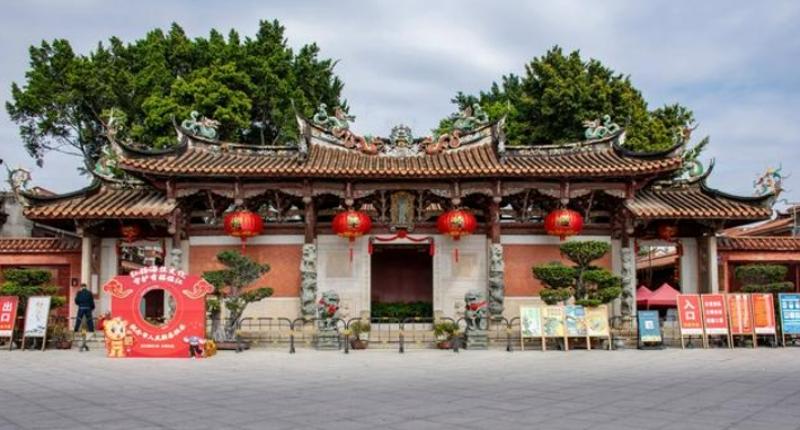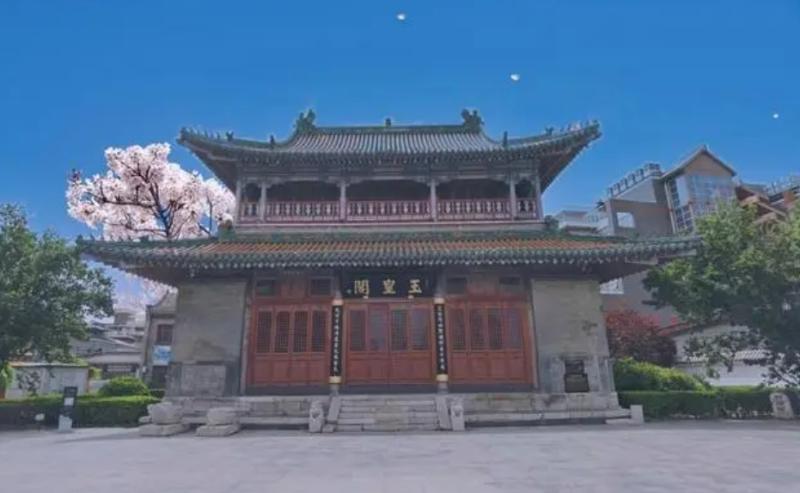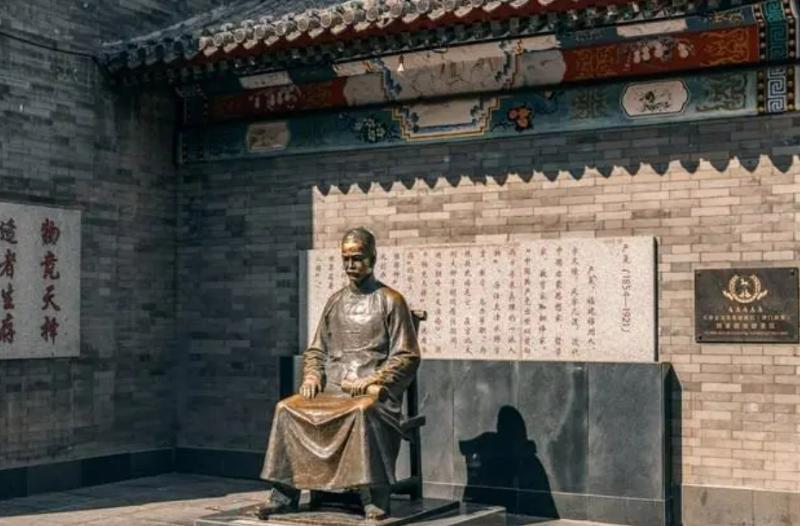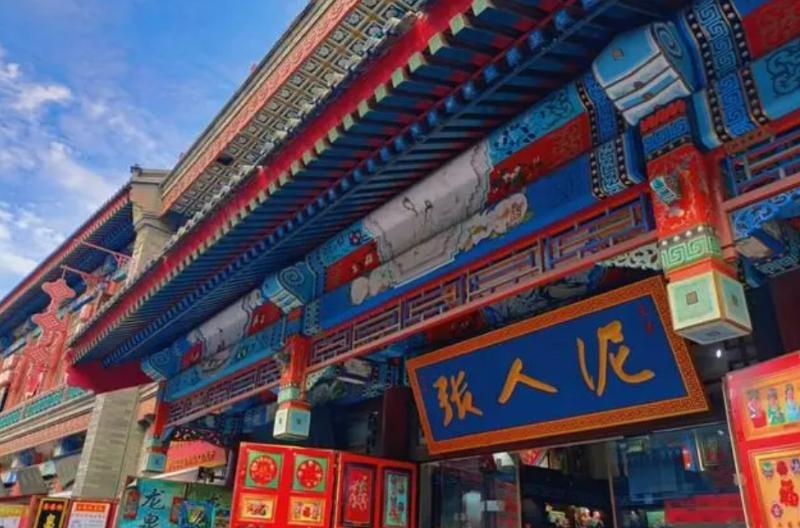Tianjin Ancient Culture Street Travel Guide and Route
Tianjin Ancient Culture Street is located in the northeast corner outside the East Gate of Nankai District, Tianjin, on the west bank of the Haihe River. As a commercial pedestrian street, it is not only a shopping paradise but also one of the ten scenic spots of Tianjin, where visitors can feel a strong historical and cultural atmosphere.
The street is designed in the style of the Ming and Qing dynasties, retaining the architectural style and basic lines of that era. The street is lined with numerous shops, gathering nearly a hundred storefronts, making it a hub for Tianjin's time-honored folk handicraft stores. This 600-meter-long street is filled with a rich sense of Chinese flavor, Tianjin flavor, ancient flavor, and cultural flavor. Every visit leaves people with a feeling of endless aftertaste.
I. Featured Attractions
1. Tianhou Palace
Tianhou Palace, built in the third year of Yuantaiding (1326), is one of the oldest building complexes in Tianjin and one of the earliest existing Mazu temples in China. Facing east, it comprises a mountain gate, a paifang, a front hall, and a main hall. Inside the palace is enshrined "Tianhou Niangniang" Lin Mo.
Tianhou Palace has existed for nearly 700 years and is listed alongside Meizhou Mazu Temple in Putian, Fujian, and Beigang Mazu Temple in Taiwan as one of the three major Tianhou Palaces in China. The saying "First there was Tianhou Palace, then there was Tianjin" highlights the historical significance of Tianhou Palace in Tianjin. Located at the center of the Ancient Culture Street, Tianhou Palace has promoted the prosperity and development of the streets to its north and south.

Reference:Overview of Tianjin Ancient Culture Street
2. Jade Emperor Pavilion
The Jade Emperor Pavilion, now only the Qingxu Pavilion remains, is the oldest wooden structure pavilion in Tianjin. In 2004, a large-scale renovation restored the original bronze statue of the Jade Emperor inside the pavilion, and the surrounding environment was also renovated and greened, giving it new vitality.

3. Tongqingli
Tongqingli, meaning "prosperity and happiness," is known as Tianjin's "Siheyuan" (a traditional courtyard). It was once a banknote office, featuring a mix of southern Huizhou-style residential characteristics and Western architectural symbols, embodying a blend of southern and northern, and Chinese and Western styles. The historical atmosphere makes it an excellent place to experience Tianjin's local culture and architectural art.
4. Tianfu Square
Tianfu Square is located in the Great Lion Alley of the Ancient Culture Street, the site of Yan Fu's former residence. Yan Fu was renowned in China's modern intellectual circles for translating Huxley's "Evolution and Ethics" and was a representative figure of the modern reformists in China. To inherit history and culture, Tianfu Square was built, featuring a bronze statue of Yan Fu and stone carvings of "Evolution and Ethics," making it an important site for understanding Tianjin's history and Yan Fu's life.

II. Time-honored Features
1. Clay Figurine Zhang
Clay Figurine Zhang is one of Tianjin's famous traditional crafts, known for its exquisite craftsmanship and unique style. In the Clay Figurine Zhang store, visitors can purchase various lifelike clay figurine works. Each piece is the crystallization of the artisan's painstaking effort, with intricate handmade production and rich color matching, symbolizing Tianjin's culture.

2. Kite Wei
Kite Wei is another renowned traditional craft shop in Tianjin. The store displays various uniquely shaped and colorful kites, showcasing the superb kite-making skills and long history of Tianjin. Visitors can buy various styles of kites, whether traditional or modern, which are highly collectible and ornamental.
3. Yangliuqing New Year Paintings
Yangliuqing New Year Paintings are a famous form of Chinese folk painting, known for their delicate lines and rich colors. The Yangliuqing New Year Paintings store exhibits various exquisite New Year painting works, allowing visitors to appreciate the unique charm of this art form and purchase art pieces with strong local characteristics.
4. Tianjin Cuisine
The Ancient Culture Street also gathers various authentic Tianjin delicacies, including Goubuli buns, Ear-hole fried cakes, Jianbing Guozi (Chinese crepes), Shuli cake, and Tianjin Mahua (twisted dough sticks). Visitors can enjoy these authentic snacks while exploring, experiencing the unique charm of Tianjin cuisine.
III. Transportation Guide
The most convenient way to reach the Ancient Culture Street is by subway or bus. Here are the main routes:
1. From Tianjin Station
If you depart from Tianjin Station, you can take Metro Line 2 to Gulou Station, then walk about 10 minutes to reach the Ancient Culture Street.
2. From the East Station
You can also start from the South Square of the East Station, walk along the Haihe River to enjoy the scenery, visit the Italian Style Area, and then cross the Jintang Bridge to reach the Ancient Culture Street on the opposite bank of the Haihe River. This route allows you to enjoy the scenery on both sides of the Haihe River while visiting the Ancient Culture Street.
3. From Tianjin West Station
If you depart from Tianjin West Station, you can take Bus 15 to Dongmalu Station, then walk about 300 meters to reach the Ancient Culture Street. Alternatively, you can take Bus 806 or 635 for a convenient journey.
We hope this guide will help you better explore Tianjin Ancient Culture Street and enjoy a pleasant travel experience. Whether you are admiring ancient architecture, experiencing traditional culture, or tasting authentic cuisine, this place will bring you unforgettable memories.
Q&A
Q1: What are the operating hours of Tianjin Ancient Culture Street?
A1: Tianjin Ancient Culture Street is generally open from 9:00 AM to 5:00 PM. However, some shops and attractions may have different hours, so it's advisable to check specific timings before your visit.
Q2: Is there an entrance fee to visit the Tianhou Palace?
A2: Yes, there is a nominal entrance fee to visit Tianhou Palace. The fee is used for the maintenance and preservation of the historical site. It's best to check the current ticket prices as they may vary.
note: This return of all, without the author's permission, may not be reproduced